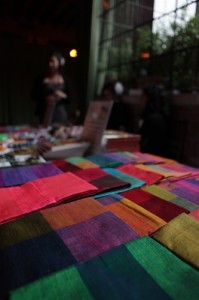As someone who has had both of her ACLs replaced, stories about joints speak to me. Add a human trafficking element, and stories scream at me. Add mention of the very hospital I had my ACL replacement surgeries (shameless promotion of Northwestern Memorial Hospital), and stories sing an operatic aria to me. The following story sings such an aria. First reported by the Chicago Tribune this past September (http://articles.chicagotribune.com/2012-09-21/news/ct-met-healing-journey-20120921_1_katmandu-return-home-joints; see below for copy of full article), a young trafficking victim is given a second chance by a Chicago-based organization called Operation Walk Chicago (http://www.operationwalkchicago.com/aboutus.php). It is a story about trafficking with one of those rare things: a happy ending. Something Green Tara Project is shooting to make not so rare.
Walk-off victories
Local team repairing joints for free helps abused, crippled Nepalese victim of human trafficking back to her feet; case shines a light on plight of slaves worldwide
September 21, 2012|By Bonnie Miller Rubin, Chicago Tribune reporter
At age 18 and with the blessing of her family, Sajina Tamang left her home in Nepal to work as a housekeeper in Lebanon. Finding work abroad was her ticket to self-sufficiency, one of the few career paths open to a rural girl in one of the world’s most impoverished countries. But instead of a haven, Tamang found horror. Her employer beat her, abusing her for two years, officials said. Eventually she was thrown from a fifth-floor balcony, suffering multiple injuries and left for dead. Aid workers found her and helped her return home, but pelvic and hip fractures left her in constant anguish, requiring that she be carried almost everywhere. Her chances of a job, marriage or productive life were virtually nil.Then, her luck turned. The delicate features and sweet demeanor that made her a target of human traffickers also brought her to the attention of Operation Walk Chicago, a team of health care professionals who travel to developing countries performing free joint replacements — routine operations here, but medical miracles in destitute corners of the globe.
Tamang’s injuries were too complex for the Chicago surgeons to attempt in Nepal. Still, they couldn’t turn their backs. “Maybe it was because she was a young woman and I have a daughter,” said Dr. Victoria Brander, a physical medicine and rehabilitation physician at Northwestern Memorial Hospital. “All I could think of was, ‘We’ve got to do something. If not me, who?'”
That is how the now 23-year-old found herself on a plane, traveling from Katmandu to Delhi to New York to Chicago. She underwent pelvic and hip reconstruction surgery at Northwestern in July, followed by intense therapy at the Rehabilitation Institute of Chicago, learning how to reuse joints and muscles long stiffened by idleness and pain. She’s scheduled to return home to Nepal next month.
Her odyssey offers a glimpse into the sordid world of human exploitation, but also into a deep reservoir of human kindness that rarely makes headlines. After that first meeting in November 2010, it took another 18 months and a collaboration of some 40 doctors, nurses, physical therapists, volunteers and donors to fulfill the singular goal of restoring both Tamang’s mobility and dignity. “I always had hope,” she said, through an interpreter. “But I also knew that I was poor and couldn’t afford help. I couldn’t have ever imagined something like Operation Walk.”
Poverty and slavery
Tamang’s quality of life could be salvaged — but not in Nepal, which has a per capita income of less than $500 and ranks among the world’s poorest countries. The intractable poverty is also why human trafficking has flourished, according to a 2012 State Department report. Girls like her — young, slight, demure — command a particularly high price, especially in India and the Middle East.
It didn’t take long for Tamang to realize that the job wasn’t what was promised. When she refused to comply with her employer’s demands, it only further enraged him. “They wouldn’t pay my salary and I had no money,” she said. “They would beat me … they wanted to kill me.” After being thrown from the balcony, she was found by Amnesty International workers, who got her to a hospital, where she remained unconscious for five days, Tamang said. Doctors tended to her injuries and she eventually found her way back home in 2008 but was unable to walk for a year, she said.
What happened to Tamang is sadly predictable, experts said. About 30 percent of the Nepalese population must leave the country to find work, allowing slave traffickers to pose as legitimate labor recruiters, according to Karen Stauss of Free the Slaves, an international nonprofit that helps captives gain freedom. “It’s about sending financial support back to your family,” she explained. “That’s the sacrifice.” The lack of schooling and economic opportunity and the low status of women are the global forces that fuel slavery numbers today, which are estimated at 27 million worldwide, Stauss said. Eradicating this global scourge means educating people on the risks of migration and creating more jobs at home.
Tamang suffered overwhelming pain and injuries, which left one leg 3 inches shorter than the other. The emotional wounds were evident in her reluctance to talk in detail about her time in Lebanon. “My advice to young girls is to never leave their families,” she said. Some neighbors even cautioned her about going to Chicago, lest she be victimized twice. “People warned me that there could be adverse consequences. … But the doctors in Nepal told me to go … and I trusted them.”
Difficult choices
Brander and Dr. S. David Stulberg, an orthopedic surgeon, see patients at a plush office on Lake Shore Drive. But for about 10 days every year, the co-directors of Operation Walk Chicago willingly throw themselves into the most primitive conditions, performing free surgery along with educating local health care workers in advanced surgical and rehabilitation techniques. The Chicago team has fixed knees and hips in China, Ecuador and India and, in 2011, in Humboldt Park, restoring the gift of mobility to disadvantaged Chicagoans. But the limitations during previous trips were nothing compared with those in Nepal, where threadbare resources force patients to improvise to get around. It’s not uncommon to observe amputees relying on old skateboards or tree branches as wheelchairs and crutches. “Once you see these things, you can’t unsee them,” Brander said. “The seed has been planted.”
Operation Walk was founded in 1994 by Dr. Lawrence Dorr, a Los Angeles surgeon. There are now 11 chapters nationwide, including in Chicago. Typically it takes about $200,000 to fund a mission, with each organization soliciting its own donations of cash and equipment. Destinations are selected based on several criteria, including whether a country has sufficient clinicians willing to provide follow-up treatment and officials with enough clout to circumvent the bureaucrats demanding bribes before releasing tons of medical supplies shipped in advance. Electricity often is erratic, water contaminated and air conditioning nonexistent. Two patients frequently occupy a single bed, while their families sleep on the floor, allowing them to feed and care for their loved ones, Brander said.
Despite all the stumbling blocks, the organization has plenty of volunteers, who often pay their own expenses and use vacation days for the privilege of putting in 14-hour shifts. “It’s a test of how good you are, the sharpness of your skills, your stamina, everything,” Brander said. “It’s a chance to get back to some basic medicine. Even the most jaded surgeon is moved.”
Dr. Lalit Puri was part of the Nepal mission, his first. Being part of the team — which performed 35 joint replacements — was a transformative experience, the orthopedic surgeon said. “I knew right away that this was going to be a part of my life and my career.”
In many developing countries, the disabled are outcasts, often relegated to a life of begging. It’s another reason that so many Nepalese traveled for days to be seen; why tears, hugs and gifts of almonds or fruit were daily offerings from grateful locals, the doctors said. Still, no matter how hard the physicians floored the accelerator — the usual 45-minute Chicago office visit was reduced to a two-minute assessment overseas — the patients never stopped coming. “Sometimes that means making difficult choices,” said Brander, closing her eyes. “Do you save the 20-year-old or the 70-year-old? You have to decide.”
Surgery and recovery
About 18 months after that first examination in Katmandu, Team Sajina, as they called themselves, was poised for her arrival in Chicago this summer. Transportation, visas and housing details had all been ironed out. Operating room time was reserved and an elite roster of physicians had been assembled. Even members of Chicago’s Nepalese community — about 10,000 strong, concentrated in the Uptown and Rogers Park neighborhoods — were alerted. On the morning of July 18, team members walked over to Worcester House, an apartment building near the hospital, to retrieve the skittish patient. With the curtain about to go up on this carefully calibrated ballet, Tamang was having second thoughts. Perhaps the surgery could be postponed?
“Think about having an operation, which is already scary,” Brander said. “Then add that you’re far from home, in a strange city, where you don’t know the language or have any family. It’s understandable.” The usual one-hour surgery stretched into 31/2 hours, much of it devoted to repairing work done by doctors in Lebanon, who used screws and bolts to hold her shattered pelvis together. When she arrived at Northwestern, the initial X-rays looked like someone had emptied a toolbox into her midsection. While the Lebanese physicians did their best, they lacked the expertise to tackle such a complicated procedure, explained Puri, comparing Tamang’s injuries to a shattered urn.
“When her pelvis was put back together, some of the pieces were missing,” said the surgeon, who later handed the patient a fistful of hardware as a souvenir. Three days later, Tamang moved across the street to the Rehabilitation Institute of Chicago, where she spent two weeks learning to walk again with daily sessions of physical and occupational therapy. She’s still grappling with the challenges — both to the body and the spirit — of an arduous road to recovery, but if all goes according to plan, she’ll return to Nepal early next month.
“Stand tall, push through it, can you take a quicker step?” said physical therapist Nicole Williams, watching her patient on the treadmill. “How’s your pain? Two more minutes, then we’ll take a break.”
Tamang grimaced, but kept going.
brubin@tribune.com
Operation Walk Chicago is a not-for-profit volunteer medical group that provides free hip and knee replacements for impoverished patients. To learn more or make a donation, go to operationwalkchicago.com or contact Jane Scanlon, Operation Walk Chicago administrative director, at 312-475-5613.


